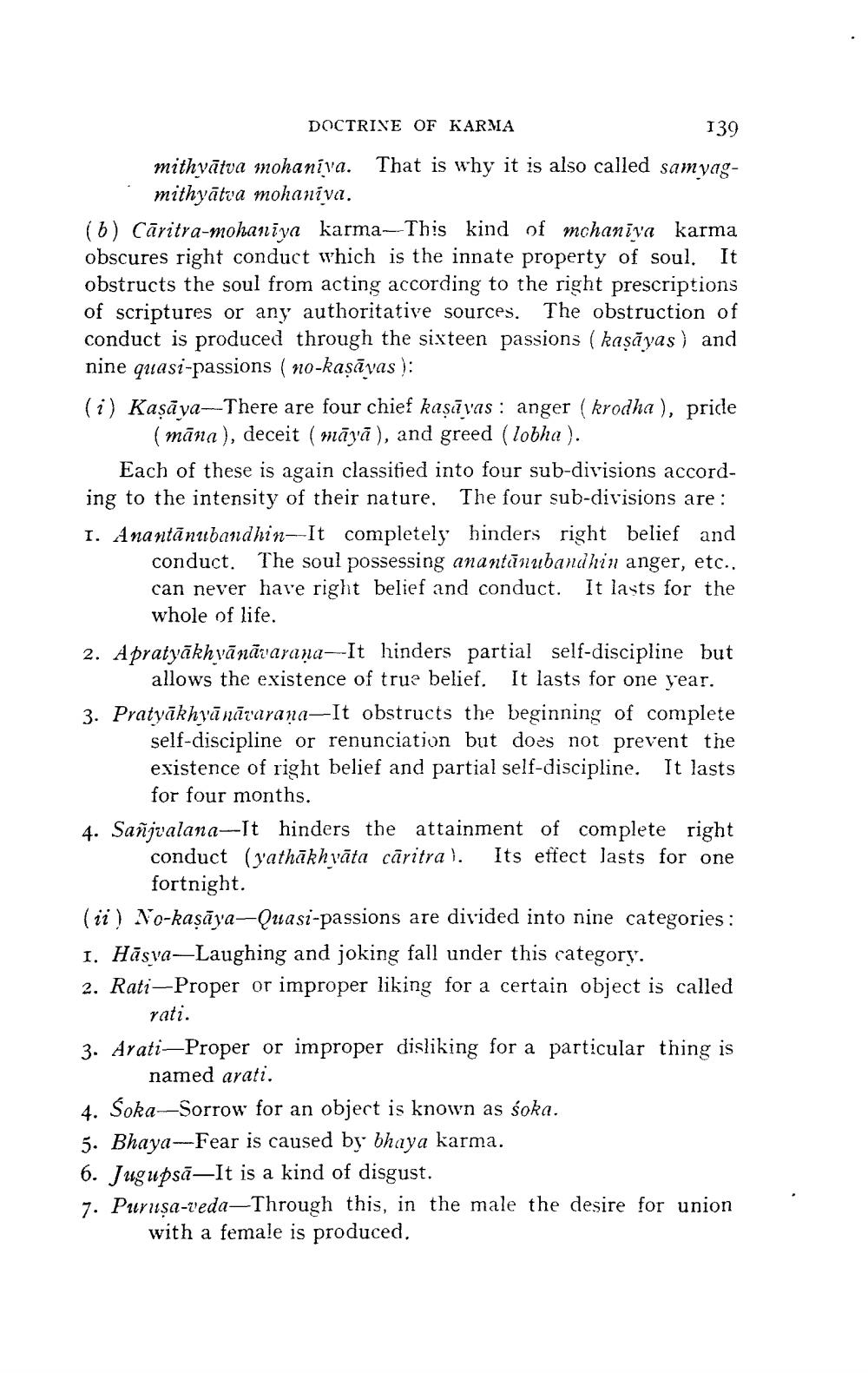________________
DOCTRINE OF KARMA
139
mithvātva mohaniva. That is why it is also called samyag
mithyātva mohaniva. (6) Căritra-mohanīya karma--This kind of mchanīva karma obscures right conduct which is the innate property of soul. It obstructs the soul from acting according to the right prescriptions of scriptures or any authoritative sources. The obstruction of conduct is produced through the sixteen passions ( kasăvas) and nine quasi-passions (no-kaşāvas): (i) Kaşāya--There are four chief kaștīvas : anger (krodha), pride
(māna), deceit (māyā), and greed (lobha). Each of these is again classified into four sub-divisions according to the intensity of their nature. The four sub-divisions are: I. Anantānubandhin-It completely hinders right belief and
conduct. The soul possessing anantānubandhin anger, etc., can never have right belief and conduct. It lasts for the
whole of life. 2. Apratyākhyānārarana-It hinders partial self-discipline but
allows the existence of true belief. It lasts for one year. 3. Pratyākhyānararana-It obstructs the beginning of complete
self-discipline or renunciation but does not prevent the existence of right belief and partial self-discipline. It lasts
for four months. 4. Sañjvalana-It hinders the attainment of complete right
conduct (yathākhvāta caritra). Its effect lasts for one
fortnight. (ii) No-kaṣāya-Quasi-passions are divided into nine categories: 1. Hāsva—Laughing and joking fall under this category. 2. Rati—Proper or improper liking for a certain object is called
rati. 3. Arati—Proper or improper disliking for a particular thing is
named arati. 4. Soka-Sorrow for an object is known as soka. 5. Bhaya--Fear is caused by bhaya karma. 6. Jugupsā—It is a kind of disgust. 7. Puruşa-veda—Through this, in the male the desire for union
with a female is produced,




